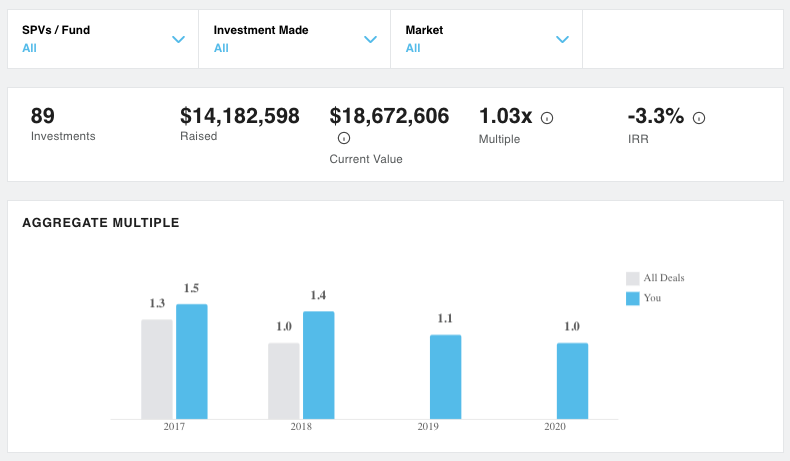AngelList Syndicate Explained

Syndicates are a popular way for anyone to get started with angel investing. In the past years, We have seen syndicates becoming one of the popular investment methods among angles and prominent entrepreneurs
What is an Angelist syndicate ✋🏻

Syndicates are single deal funds run by angel investors. Syndicates have transformed the way angel investors invest in startups.
These syndicates help a group of backers to make small bets on startups. When compared with typical angel investment deals, here investment ticket size is small for each backer, thus reducing risks.
In several cases, syndicates helped raise initial funding to startups that could not raise a venture round. Some of them turned out to be incredibly successful, like the Calm meditation App ( Read our analysis on calm here :).
Angelist syndicate - working!
The working of an angel list syndicate is relatively simple. Every syndicate will have a syndicate leader and syndicate backers.
- Role of Syndicate lead 👨🏻
Syndicate leads are usually seasoned angel investors or an entrepreneur. Syndicate leaders identity potential deals and do all the grunt work like due diligence, deal flow management and negotiation on terms of investment with the startups.
Syndicate leads can create a syndicate, and they can announce the fund's mission on the angel list; backers can join them and co-invest in the deal along with the lead.
Syndicate lead has the liberty to add/remove syndicate backers from the syndicate, and this is usually done based on the participation of backers in various deals. Syndicate leads can also decide how much money they can accept from the backers on a specific deal.
-Syndicate backers 👦🏻
Syndicate backers are a group of investors or high net worth individuals who allocate funds for the syndicate along with the syndicate lead.
Whenever this syndicate lead decides to invest in a startup, he will write a deal memo and send it to syndicate backers.
Syndicate backers can review and decide where to invest in this specific deal or not. Once syndicate members decide on the deal, they can simply invest in it through the angel list platform.
-Role of Angel list Platform 👼🏽
Angle list works as the middle layer that facilitates fund transaction; they will set up a new escrow and keep the fund.
Angel list will also create a Delware LLC as a vehicle to manage that specific fund, and they will charge $8000 per syndicated deal to cover all these legal and backend expenses.
Return on investment 💰
As a syndicate backer, there is no upfront fee you have to pay.
The Syndicate and Angellist benefit from the deal when an exit happens ( Acquisition, IPO ).
When this happens, the syndicate's stake in that startup will be sold, and backers will get their invested capital back with profit.
From this profit
👋🏻 Angel list will collect 5%
👋🏻 Syndicate lead collects 15% ( typical amount, can vary )
👋🏻 The rest goes to the syndicate backers
As a syndicate backer, there is no upfront fee you have to pay, and there is a percentage fee paid to angel list as a commission (in case of an exit, typically angel list take 5% and syndicate lead take 15% )
Angel list syndicates are a great way to get involved in the venture investor ecosystem. To become a backer, you have to meet the requirement set by the local regulatory body, and this varies based on country.
